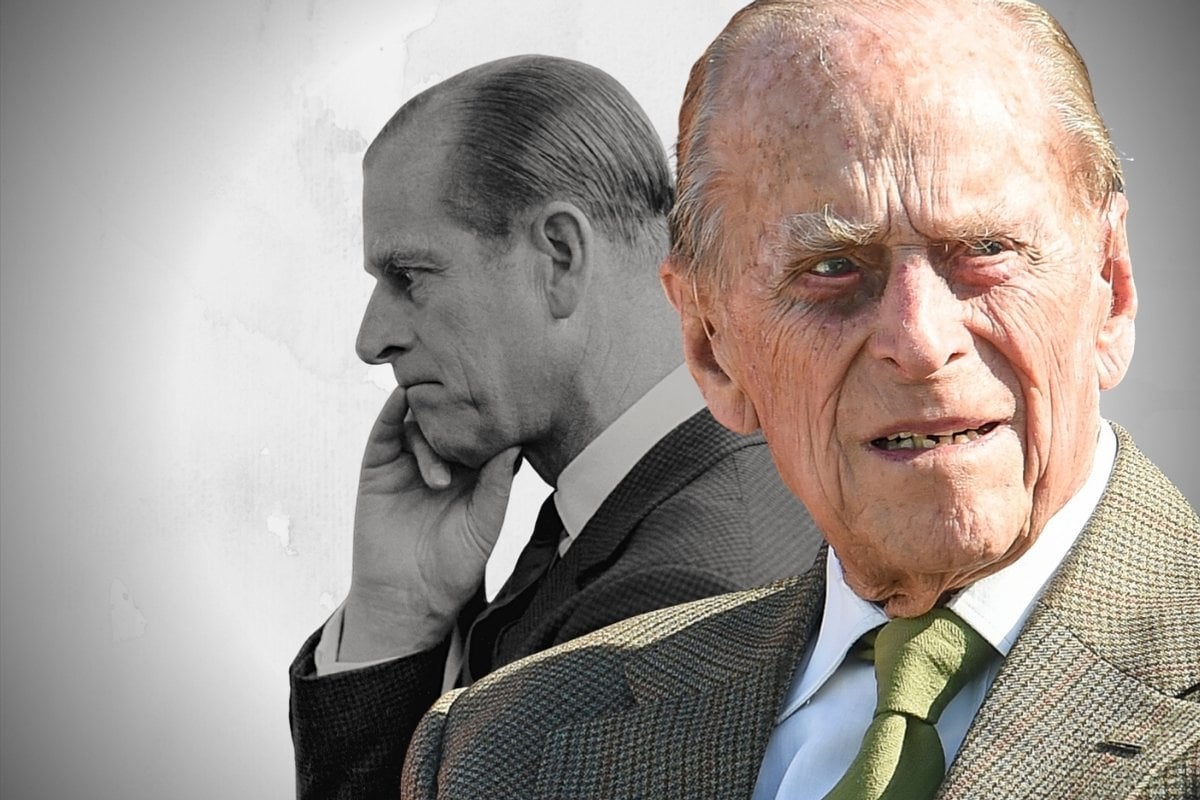
On Tuesday, an elderly man was wheeled to a waiting car by staff at London's Kind Edward VII Hospital.
At 99, he'd overcome an infection and undergone heart surgery, and after a four-week admission, he was ready to begin the next phase of his recovery at home.
There are photographs of that moment. Shot through the windows of his chauffeur-driven BMW, they capture the great-grandfather strapped into the back passenger seat.
His cheeks appear sunken. His complexion, pallid and dry. There are dark circles beneath his eyes. He looks fatigued, even a little overwhelmed.
Listen: Mamamia Out Loud dissect what women are talking about this week, from the culture of Parliament House to the British royals. Post continues after podcast.
Because of who his — Prince Philip, Duke of Edinburgh, the husband of Britain's reigning monarch, Queen Elizabeth II — those photographs were published around the world.
Because of who he is, his appearance inspired memes, jokes and taunting headlines.
He has been compared to "Frankenstein's monster", "a human Ship of Theseus", a zombie. Many questioned whether he was, in fact, alive.
Yes, there is plenty to deride about the Duke.
He once asked a First Nations man if his people "still throw spears at each other". He mocked the President of Nigeria for his traditional robes. He suggested to a 13-year-old boy that he ought to lose weight. And, when remarking on a piece of tartan fabric, he asked Scottish Conservative leader Annabel Goldie, "Do you have any knickers in that material?"
He's hardly a sympathetic figure. And the current mocking mood is no doubt a symptom of all that.
But it's also a symptom of how seldom we see faces like his.
There's an element of shock in many of the jokes about his appearance, even horror. There are suggestions that he should be euthanised. That he looks like a corpse. There are quips about how little it would take to end his life.

Top Comments